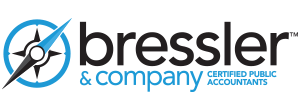New Opportunity to Defer Taxable Gains
Those who have large taxable gains from the sale of a stock, asset, or business and would like to defer that gain with the possibility of excluding some of it from taxation should investigate a new investment called a “Qualified Opportunity Fund” (QOF), which was created as part of the Tax Cuts and Jobs Act.To help communities that have not recovered from the past decade’s economic downturn, lawmakers included in the Tax Cuts and Jobs Act the new code Sections 1400Z-1 and 1400Z-2, which are intended to promote investments in certain economically distressed communities through QOFs. Investments in QOFs provide unique tax incentives that lawmakers designed to encourage taxpayers to participate in these funds:
Reinvesting Gains – Starting in 2018, a taxpayer who has a gain (short-term, long-term, ordinary, or capital) from selling or exchanging any non-QOF property to an unrelated party may elect to defer that gain if it is reinvested in a QOF within 180 days of the sale or exchange. Only one election may be made with respect to a given sale or exchange. If the taxpayer reinvests less than the full amount of the gain in the QOF, the remainder is taxable in the sale year, as usual. The amount of the gain – not the amount of the sale’s proceeds, as in Sec 1031 deferrals – needs to be reinvested in order to defer the gain.
The gain income is deferred until the date when the QOF investment is sold or December 31, 2026 – whichever is earlier. At that time, the taxpayer includes the lesser of the following amounts as taxable income:The deferred gain
- The fair market value of the investment, as determined at the end of the deferral period, reduced by the taxpayer’s basis in the property. (Basis is explained below.)
A taxpayer who holds a QOF investment for 10 years or more before selling it can elect to permanently exclude the gain from the sale that is in excess of the originally deferred gain (i.e., the appreciation).
Qualified Opportunity Fund Basis – The basis of a QOF that is purchased with a deferred gain is $0 unless either of the following increases applies:
(a) If the investment is held for 5 years, the QOF’s basis increases from $0 to 10% of the deferred gain.
(b) If the investment is held for 7 years, the QOF’s basis increases from $0 to 15% of the deferred gain.
If a taxpayer holds a QOF that was purchased with deferred gains on December 31, 2026, the original deferred gain must be included as gross income on that taxpayer’s 2026 return; the basis of the investment will then be increased by the amount of this included gain.
If the QOF investment is held for at least 10 years before being sold, the taxpayer can elect to increase the basis to the property’s fair market value. This adjustment means that the QOF’s appreciation is not taxable when it is sold.
Example 1: On June 30, 2018, Phil sold a rental apartment building for $3 million, resulting in a gain of $1 million. Within the statutory 180-day window, he invested that $1 million into a QOF and elected to take the temporary gain deferral exclusion. On July 1, 2026, he then sold the QOF for $1.5 million. Because Phil held the investment for over 7 years, its basis is enhanced by $150,000 (15% of $1 million). Because the investment’s fair market value is greater than the original deferred gain, he must include a taxable gain of $1.35 million ($1.5 million – $150,000) in his 2026 gross income.
Example 2: The facts here are the same as in Example 1, except Phil waited to sell the QOF until 2030, meaning that he held it for nearly 12 years. Because he had the investment on December 31, 2026, he was required to include $850,000 ($1 million – $150,000) of deferred gain on his 2026 return, and his basis in the QOF was increased from $0 to $850,000. After selling the QOF for $1.5 million, Phil elected to permanently exclude the gain by increasing his basis to $1.5 million (the fair market value on the date of the sale). Thus, he has no gain ($1.5 million – $1.5 million) in 2030.
Mixed Investments – If a taxpayer’s investment in a QOF consists of both deferred gains and additional investment funds, it is treated as two investments; this provides the tax benefits of both types: the temporary gain deferral and the permanent gain exclusion (which applies only to the deferred gain).
Qualified Opportunity Funds – To defer gains-related taxes through the recently enacted opportunity-zone program, taxpayers must invest in a QOF – an investment vehicle that is organized as a corporation or a partnership for the purpose of investing in properties within qualified opportunity zones. These investments cannot be in another QOF, and the properties must have been acquired after December 31, 2017. The fund must hold at least 90% of its assets in the qualified-opportunity-zone property, as determined by averaging the percentage held in the fund on the last days of the two 6-month periods of the fund’s tax year. Taxpayers may not invest directly in qualified opportunity zone property.
Partnerships – Because a QOF that is purchased with deferred capital gains has a basis of zero, taxpayers who invest in QOFs that are organized as partnerships may be limited to deducting the losses that these partnerships generate.
Qualified Opportunity Zones – A low-income census tract can be specifically designated as a qualified opportunity zone after a nomination from the governor of that community’s state or territory. Once the qualified opportunity zone nomination is received in writing, the treasury secretary can certify the community as a qualified opportunity zone. Once certified, zones retain this designation for 10 years.
The Department of the Treasury and the Internal Revenue Service will provide further details regarding this new incentive in the near future, including additional legal guidance and an outline of the procedure for electing to defer a gain. If you have questions, please give this office a call to set up an appointment to discuss your situation — 559.924.1225.





